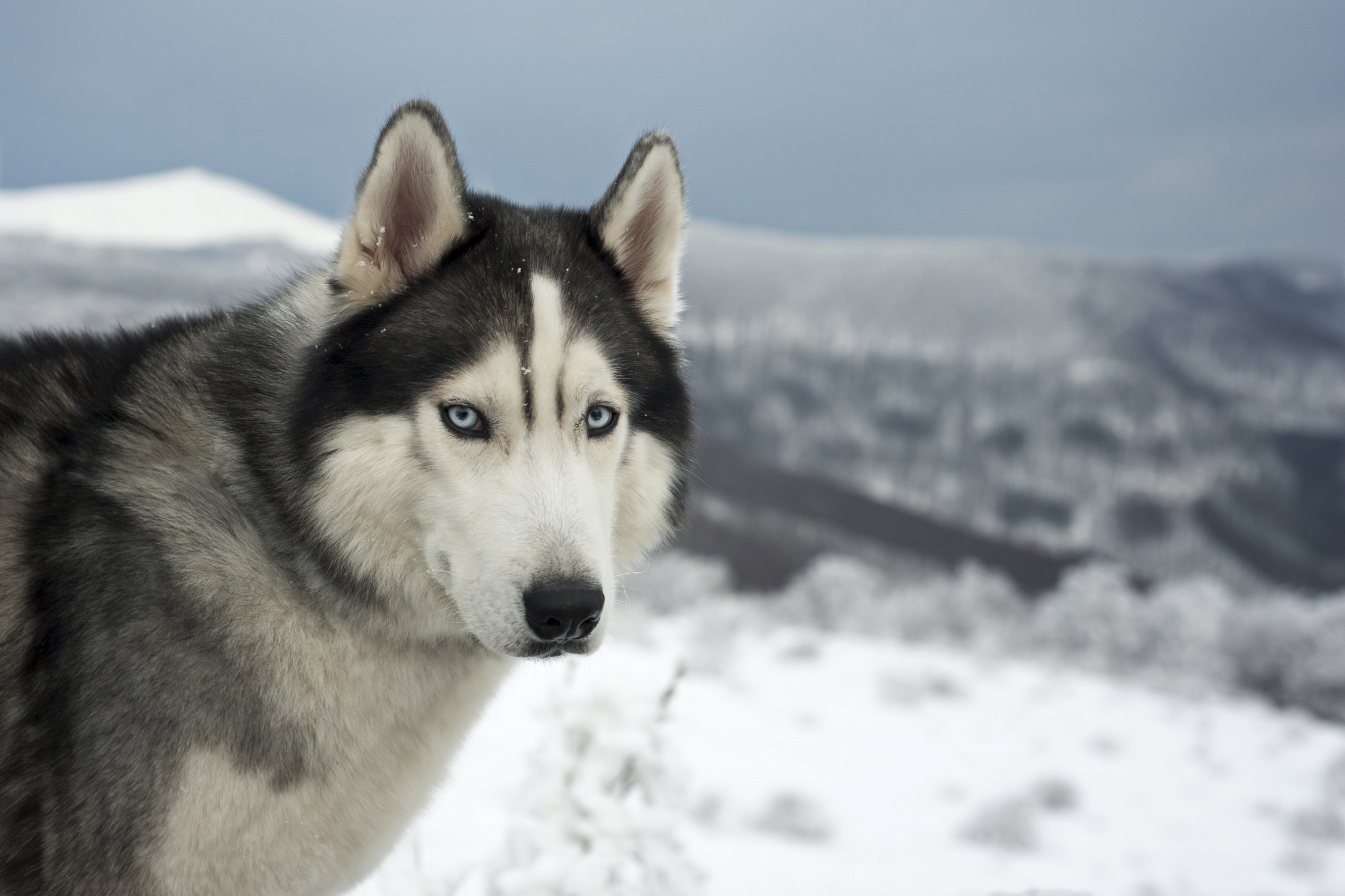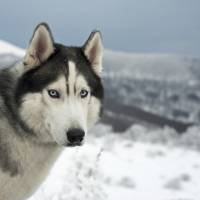When I first went to the Canadian Arctic in 1958, sled dogs were a part of life for the indigenous Inuit and the Royal Canadian Mounted Police, and part of the scenery and the soundscape for everyone in those frigid far-northern reaches.
Humans crossed from Siberia to North America more than 10,000 years ago, but around 200 B.C., peoples from the Thule culture — named after an archaeological site in northern Greenland — produced experts in hunting and the use of marine mammals.
With small, speedy kayaks and much larger framed boats called umiaks, these people — whose ancestors lived around the Bering Sea — took not only seals but also walrus and huge bowhead whales. They used harpoons that collapsed or folded once struck, thus saving the precious shafts from being broken. Inflated seal skins with ivory mouthpieces and plugs were used as floats attached to the harpoon lines, slowing down the prey when it tried to dive or swim away, and keeping it afloat when dead.
The cold climate enabled them to store large amounts of meat and blubber, though they used all parts of the animals they killed. As Arctic marine mammals do not generally carry parasites or diseases dangerous to humans, they could ingest blood, meat and blubber raw, giving them all the vitamin C they needed. During the long, dark, freezing winters, blubber also provided fuel to give light and warmth and enable people to melt snow and ice.
These people brought with them an ancient Asian breed of dog that some people call "husky," and which today's Inuit call qimmiq. Undoubtedly these were originally hunting partners and watchdogs, but unlike other, older Arctic cultures, the Thule people also had light, flexible sleds and, with their dogs to pull them, they could travel long distances. As a result, they spread all the way across to Greenland and down the coast of Labrador, replacing older Arctic cultures and becoming the ancestors of modern Inuit.
The huskies of Arctic Canada and Greenland have a thick double coat, with long, coarse, waterproof guard hairs protecting dense softer fur beneath. The males are bigger than the females, weighing from 30 to 40 kg, and up to 70 cm at the shoulder, with a thick mane of fur that makes them look even bigger and stronger. Huskies' coats can be all colors — white, black, silver or brown — with or without patches, spots, bibs and socks. Eyes, too, are sometimes pale blue, but also brown, green or yellow.
Like Japanese native breeds including the Akita, Kishu and Shiba, they carry their furred and feathered tails up over their backs, and in the cold and snow a husky can sleep outside, all curled up, with its tail over its nose.
Huskies get excited over bears, and before the Inuit had rifles, the dogs would gang up and taunt a polar bear until it stood on its hind legs and the hunter could thrust a lance at its throat. I have seen how a pack of sled dogs, released from their harnesses, will charge after and surround a bear, slowing it down long enough for the hunter to get closer with his rifle.
The dogs can also help to locate ringed seals' holes in the ice that are covered in snow in the depth of winter, a time when the seals don't leave the water. As the sea ice freezes, ringed seals — known to the Inuit as netsik or nattiq — keep several holes open because they have to range over the sea bottom for food. Then snow covers them until spring, when seals — the most abundant ice seals in the northern hemisphere — haul out onto the ice. Averaging about 1½ meters long with a weight of about 50 to 70 kg, ringed seals give birth to a single pup when the ice is still at its most solid, maybe 2 meters thick. The mother makes a small snow dome by a hole called an aglu, where the pup is shielded from wind and weather, just as the Inuit can be snug and warm in a snow-dome igloo.
In the winter, Inuit hunters traditionally wait by the snow-covered seal holes, usually making a little hole in the snow with the tip of their harpoon, then licking and freezing a tuft of hare fur or owl feathers to the side of the little hole that would flutter when the seal came up to breathe — at which point the hunter would thrust down through the snow with his harpoon.
Seals don't come up at the same hole each time, and they will avoid one near any kind of sound or disturbance, so it's easier to get one when hunters cooperate, spreading out and waiting quietly by holes a dog has found for them.
The first few times I went to the Arctic, the use of dog sleds was still common. To be a hunter meant having dogs, and that meant you had to hunt to feed them as well as your family. Then, in 1961 and '62, on an expedition with the Arctic Institute of North America to Devon Island — at roughly the size of New York state, the biggest uninhabited island in the world — we began testing an infernal machine with a single rubber track that was later to be called a snowmobile.
Those we tested bogged down in snow and broke their tracks, so they were not very "mobile." I far preferred dogs, but as our leader didn't want any animals killed, we couldn't use a dog team as we'd have to hunt seals to feed them. In the following years, however, the snowmobiles were much improved — with many of the best made in Japan — but convenience and speed weren't the only reasons they replaced sled dogs in most areas.
That was also because, in the Canadian Arctic especially, the Inuit were encouraged or coerced to live in larger communities, where their children could go to school. That meant more hunters and their dogs gathered together, so the surrounding areas soon had very little game — which is why the Inuit traditionally lived in small, widely scattered communities, traveling to meet and share with each other. I think that made them one of the most welcoming people in the world.
Meanwhile, this summer when I went on an Adventure Canada cruise aboard the Ocean Endeavor (see September's "Notebook"), we visited three small Baffin Island communities. They were all strangely quiet. No sled dogs.
We were also invited to the coastal hamlet of Itilleq in western Greenland — a visit facilitated by Aaju Peter, a lawyer, activist and teacher who was awarded the Order of Canada in 2011 for her efforts in defending the culture and rights of the Inuit.
I consider myself very fortunate to have sailed with her on that trip; she is a wonderful, articulate person who was born in Greenland and had lived in Itilleq as a little girl until she began going to school in Denmark at the age of 11. In 1981 Aaju went to Iqaluit — which lies on the south coast of Baffin Island and is the capital of the Canadian province of Nunavut — where she married a Canadian Inuk.
One of the things Aaju has fought against is the banning of seal skins by the European Union. As for the United States, should I cross into even Alaska wearing my fine sealskin anorak, it would be confiscated at the border. All this despite the fact that the Inuit not only need seals' meat and blubber for their families and dogs, and the skins for making clothing and boots, but they also relied on selling the some skins to bring in cash. Taking this income from them was totally unfair.
Itilleq is a lovely little coastal hamlet of hunters and fishermen, with a population of around 70 who welcomed us, total strangers, into their homes for coffee, biscuits and cakes. The young people were proud of their traditional Greenland summer clothes — but to me this place, too, was strangely quiet. Our host told us they had shot all their dogs because the sea ice now freezes later and melts earlier, so they can't hunt enough seals over the ice — and therefore cannot feed their dog teams.
Inuit in Canada also told us about the increasing unreliability and decreasing amounts of sea ice — and of birds, insects and fish coming north that they had never seen before. The media is constantly reminding us of the desperate plight of polar bears, but what I most worry about is that without reliable, thick sea ice, the ringed seal — the most important seal in the Arctic — will not be able to reproduce and will vanish from vast areas.
The Inuit have no doubt about climate change; what is happening is altering not only the ice and the weather, but thousands of years of partnership between the hunting Inuit and their dogs. Some very sincere people, Inuit and others, are doing their best to preserve the northern dogs and the art of traveling with dog sleds — but I hope it won't just be for the wealthy and for tourists.




